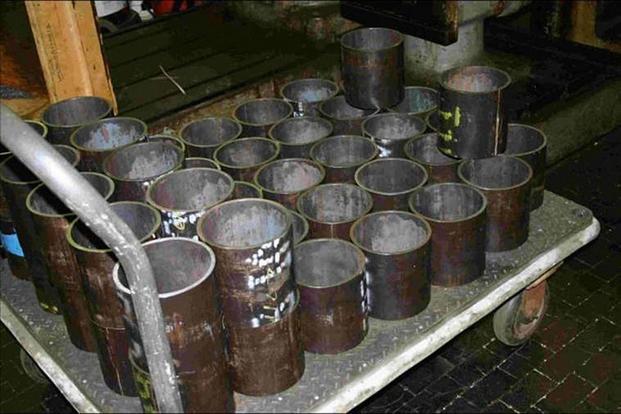The roadside bomb that killed a U.S. soldier and wounded a second in Iraq last week was a type of improvised explosive device considered the deadliest used against U.S. forces in the long conflict, a top U.S. general said Thursday.
The device that hit the vehicle carrying the two soldiers on Oct. 1 in Salahuddin province north of Baghdad was an EFP, or explosively formed penetrator, said Army Maj. Gen. Robert White, commander of Combined Joint Forces Land Component Command-Operation Inherent Resolve.
In a video briefing from Baghdad to the Pentagon, White said the EFP "has been used over the last 15 years or so in Iraq and other places in the world. It is being employed in Syria right now. It is a dangerous, dangerous battlefield out there."
A U.S. investigation of the Oct. 1 attack determined that the device used was an EFP, White said, and Iraqi Prime Minister Haider al-Abadi has now ordered a second investigation to find the perpetrators.
The attack occurred along a stretch of road called Route Tampa by U.S forces and was a "classic ambush" at a "turn in the road, a dip in the road, causing the vehicle to slow down," White said.
Spc. Alexander W. Missildine, 20, of Tyler, Texas, was killed in the attack. He was assigned to the 710th Brigade Support Battalion, 3rd Brigade Combat Team, 10th Mountain Division (Light Infantry), out of Fort Polk, Louisiana.
"It was a tragic event. Specialist Missildine was a key component and a part of our coalition," White said, "and our prayers go out to his family. Again, it was tragic."
The use of the EFP, first reported by The Washington Post, is believed to be the first time the device has been employed against U.S. forces in several years.
In earlier stages of the conflict in Iraq, EFPs were considered the most lethal weapons used by the enemy and were responsible for the deaths of hundreds of U.S. troops in attacks on convoys and armored vehicles, according to U.S. officials.
EFPs use an explosive shaped charge to transform a copper or steel plate into a high-velocity projectile that can penetrate even the most heavily armored vehicles.
"We know it was a steel penetrator for an EFP," White said.
Before the withdrawal of U.S. combat forces in 2011, U.S. commanders frequently charged that Iran was behind the supply of EFPs to Shiite militants in Iraq.
In his briefing from Baghdad, White said that demoralized ISIS fighters are fleeing the battlefield or surrendering in droves in a sign of their imminent defeat following the fall of Mosul, Tal Afar, Hawija and other former strongholds of the Islamic State of Iraq and Syria.
"Daesh [another name for ISIS] is fighting for survival. The physical caliphate has been defeated" with the ouster of ISIS fighters from 95 percent of Iraq's territory, he said. "They're starting to run away, and they're starting to surrender."
"They're losing, they know they're losing, and they're on their way out," White said, but the U.S. commitment in Iraq will remain to prevent a return of ISIS and to assist the central government in Baghdad in bringing about political stability.
That stability is now threatened by the independence movement in the Kurdish region.
"We're here to help the Iraqi Security Forces defeat ISIS," White said. "What's happening between the KRG [Kurdish Regional Government] and GOI [Government of Iraq] is political in nature, and it's for them to resolve."
He said that U.S. training for Kurdish Peshmerga forces is continuing in Irbil, capital of the Kurdish region.
As far as "any type of assistance from the government of Iraq to Irbil being cut off -- it has to be something you talk to the government of Iraq about," White said.
The general disclosed that he met last week in Irbil with Masoud Barzani, president of the Kurdish region.
Barzani "was concerned that the coalition would stop providing support to his forces in the form of training," White said. "I assured him that that was not the case" and the training would continue "until I was instructed or ordered otherwise. And it has to date, and we are still programming that training well into the future."
-- Richard Sisk can be reached at Richard.Sisk@Military.com.






























